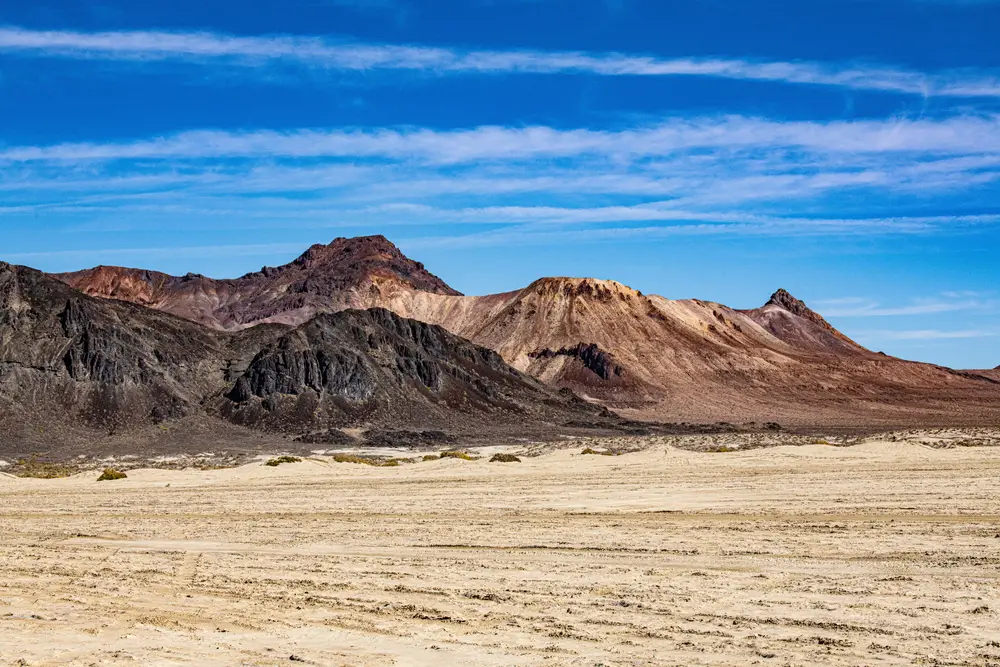Throngs of festival enthusiasts flocking to Burning Man, globally recognized as one of the most distinguished artistic festivals in existence, were left with a jaw-dropping spectacle as a colossal flood swept over Black Rock City in the Nevada Desert. As the floodwaters rose, many found themselves taking two contrasting approaches – some chose to beat a hasty retreat, evacuating on foot, while others opted to sit back and appreciate the remarkable testament to self-sufficiency that Burning Man symbolizes.
What the floodwaters also brought with them was a fascinating exhibition of the adaptiveness of life. Amidst the chaos, an array of creatures that had lain dormant for decades in the arid lake bed were revived and commenced their topside living, adding an unexpected twist to the excitement of the festival.
Science break.
— Firecaptain and Jack (@Firecaptain16) September 5, 2023
Dinosaur Shrimp Are Waking Up At Burning Man.
Triops (pics 1-3) and fairy shrimp are extremophiles capable of surviving years-long droughts. They endure in the sediment as eggs, dormant until floods bring them to do some topside living. https://t.co/a7xjZNo4gD pic.twitter.com/aMXY8PIrUc
Ablaze with Life: How Extremophiles Survive
Triops and fairy shrimp, known as extremophiles, are fearless survivors capable of withstanding lengthy periods of drought by hibernating as dormant eggs in the sediment. What they need, however, is a generous supply of water to awaken them from their slumber and kickstart their life cycle.
Kin to the world’s most ancient living creatures, Triops cancriformis, the creatures discriminatorily known as “dinosaur shrimp” or Triops, were present amongst the crowd. These intriguing crustaceans are equipped with two conventional eyes along with a third ocular point, an evolutionarily iconic “third eye” common amongst insects. This eye allows them to detect subtle changes in light conditions in order to evade predators and adapt to their environment swiftly.
The Fairy and Dinosaur Shrimp: An Unexpected Encounter
Sharing the stage with the dinosaur shrimp were another set of extremophiles, the fairy shrimp. Some may even be familiar with these tenacious survivors under the childhood nickname of “sea monkeys”. These tiny yet resilient creatures, scientifically categorized as Branchiopoda, are transparent crustaceans that inhabit vernal pools and hypersaline lakes all over the globe. The astounding ability of these fairy shrimp to tolerate elevated salt concentrations in their environment has earned them another alias: brine shrimp.
The Dynamic Ecosystem of Black Rock Playa Lakebed
Interestingly, the dehydrated crustaceans’ appearance on the Black Rock playa lakebed is not as abnormal as it may seem. In fact, repeat visitors of the grand Burning Man festival won’t find this surprising at all. More impressively, organizations like the Friends Of Nevada Wilderness (FNW), who are partners with Bureau of Land Management’s (BLM) Winnemucca District, often make their way to the festival to spread awareness about the inspiring resilience of dinosaur and fairy shrimp.

The diligent members of FNW have also volunteered their efforts at this grand festival to assist the BLM staff. Together, they strive to educate festival attendees about the unique cultural, historical, and natural features of the playa, including the endangered fairy shrimp that are given life during the spring floods.
Fairy Shrimp: Creatures of All Seasons
The typical spring season stretches from March to June in the Nevada Desert yet these crustaceans, through their adaptive biological processes, have learned not to be choosers when it comes to hatch-time. They are patient and simply wait for the right environmental triggers to kickstart their life cycle. As observed by Wupatki National Monument staff during an Arizona monsoon, Triops and fairy shrimp eggs remain dormant only until the appearance of their favorite condition: a hefty downpour.
When the Rain Falls, Life Blooms
And ‘a hefty downpour’ is what Burning Man witnessed for the 2023 festival. Unprecedented torrential rains blocked off roads on Friday, stranding the estimated 70,000 festivalgoers in the remote Black Rock City, hundreds of miles away from the nearest metropolitan area, Reno. Although the festival has officially ended, for the Triops and fairy shrimp, the real party has just begun!
The Cycle of Life: An Ongoing Race Against Time
It will take just over a week for these critters to begin their egg-laying course. However, the clock is ticking as weather conditions can quickly change. As these ‘modern fossils’ from the Black Rock Desert demonstrate, the modern shrimp stranded on the sediment when it dries will be less fortunate than their dormant counterparts. As we look forward to their continued survival, we say, “Good luck, you tenacious crustaceans!”
Finding Inspiration in the Smallest of Places
Events such as this one serve as a powerful reminder of the tenacity of life, even in the harshest of conditions. Whether you’re a mold-breaking artist, an adventure-seeking festival-goer, or a spectator from afar, the exciting, unpredictable, and awe-inspiring journey of these creatures can serve as a potent source of inspiration. Adapt, survive, and thrive, no matter the circumstance, seems to be the mantra imbibed by these shrimp, a lesson worth taking to heart. As the sun sets over the now tranquil Black Rock Desert, we look to the future, excited for the stories it holds, and the life that will undoubtedly continue to ebb and flow with the rhythm of the land.

This Site Was Inspired By An Interest in Protecting the Environment:
We had the privilege and joy of learning from Dr. Charlie Stine who instilled a love for the natural world through incredible field trips with the Johns Hopkins Odyssey Certificate program in Environmental Studies. At the time, the program was endorsed by the Maryland Department of Natural Resources. Sadly, after Dr. Stine retired, the program was phased out. We hope that we honor his legacy by shining a bright light on environmental issues and sharing good news about the success of various conservation programs when possible.

